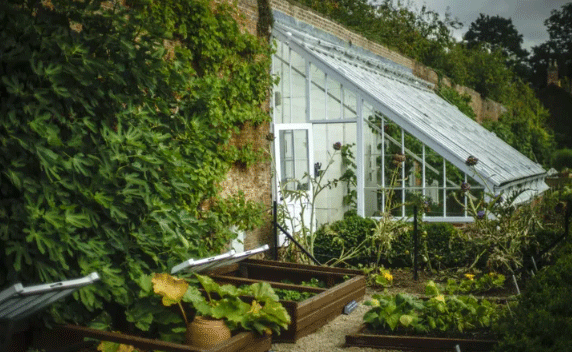An underground greenhouse is a sunken structure designed to utilize the natural insulation of the earth to maintain consistent temperatures, even in extreme weather. These greenhouses are typically built a few feet below ground or on slopes and are oriented to capture maximum sunlight.
By reducing reliance on external heating, underground greenhouses make it possible to grow crops year-round, even in regions with harsh winters. This innovative approach combines traditional horticultural practices with modern sustainability principles.
The Benefits of Underground Greenhouses
- Extended Growing Season
Underground greenhouses enable crops like leafy greens, root vegetables, and brassicas to thrive during cold months. With added thermal materials or minimal heating, summer crops like tomatoes and peppers can also be cultivated. - Energy Efficiency
Using the earth’s stable temperatures reduces the need for artificial heating. Passive solar energy and black surfaces for heat absorption further enhance energy savings. - Cost-Effectiveness
Basic structures can be built with readily available materials such as wood, polycarbonate panels, and reflective surfaces, making them accessible for most budgets. - Overwintering Plants
Temperatures inside an underground greenhouse rarely drop below 35°F, making it an ideal environment for overwintering perennials and woody plants without significant risk of frost damage. - Versatility
In addition to vegetables, underground greenhouses are suitable for growing mushrooms and starting seedlings for spring planting.
Building Considerations
- Location
Choose a site with maximum sunlight exposure, preferably south-facing, to optimize natural heating. Avoid areas with poor drainage or proximity to water tables to prevent flooding. - Depth
Double the frost depth in your region to ensure plants remain safe from freezing. For example, if the frost depth is 18 inches, dig at least 36 inches deep. - Foundation and Drainage
Use sturdy materials like cement blocks or treated timbers for retaining walls. Incorporate drainage systems to handle water runoff effectively. - Ventilation
Proper ventilation prevents humidity buildup, mold, and potential gas pooling, particularly in tightly sealed greenhouses. A simple vent system can maintain air quality and plant health. - Sunlight and Reflection
Enhance sunlight penetration with reflective surfaces on the inner roof. Paint high-heat capacity materials like stones or barrels black to store and radiate heat.
Crops Ideal for Underground Greenhouses
The variety of crops depends on the greenhouse’s construction and regional climate. Commonly grown plants include:
- Cool-Season Crops: Spinach, kale, carrots, and broccoli.
- Perennials: Strawberries, herbs, and shrubs for overwintering.
- Specialty Crops: Mushrooms and microgreens thrive in the stable, controlled conditions.
Underground greenhouses represent a sustainable evolution in agriculture, blending innovation with practicality. By capitalizing on the earth’s natural insulating properties, they empower growers to extend growing seasons, reduce energy consumption, and produce diverse crops year-round. Whether you’re a farmer, agronomist, or hobbyist gardener, a walipini could revolutionize your approach to gardening.










